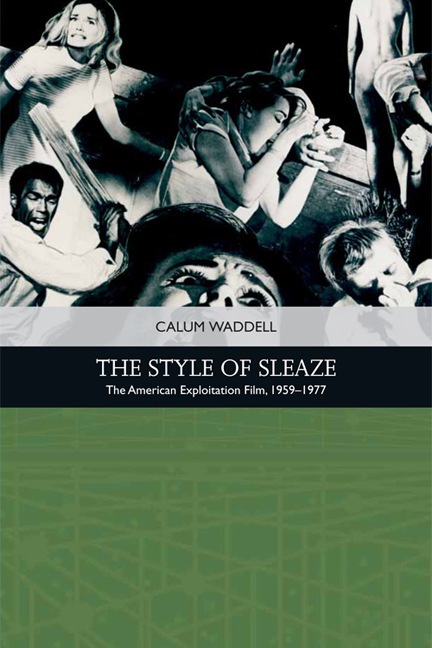Book contents
- Frontmatter
- Contents
- List of Figures
- Acknowledgements
- Introduction
- 1 Not Quite Hollywood
- 2 Emerging from Another Era – Narrative and Style in Modern Exploitation Cinema
- 3 Can We Call It Sexploitation?
- 4 Sex Morality Plays: Character in Adult Cinema
- 5 The Body is Everything: Sexploitation Spectacle
- 6 Exploitation-Horror Cinema
- 7 Cannibalising Tradition: Romero’s Zombies and a Blood Feast
- 8 Slash and Burn: The Exploitation-Horror Film in Transition
- 9 Blaxploitation Cinema: Race and Rebellion
- 10 Sex, Violence and Urban Escape: Blaxploitation Tropes and Tales
- 11 The Blaxploitation Female
- 12 Exploitation as a Movement
- Select Bibliography
- Index
- Frontmatter
- Contents
- List of Figures
- Acknowledgements
- Introduction
- 1 Not Quite Hollywood
- 2 Emerging from Another Era – Narrative and Style in Modern Exploitation Cinema
- 3 Can We Call It Sexploitation?
- 4 Sex Morality Plays: Character in Adult Cinema
- 5 The Body is Everything: Sexploitation Spectacle
- 6 Exploitation-Horror Cinema
- 7 Cannibalising Tradition: Romero’s Zombies and a Blood Feast
- 8 Slash and Burn: The Exploitation-Horror Film in Transition
- 9 Blaxploitation Cinema: Race and Rebellion
- 10 Sex, Violence and Urban Escape: Blaxploitation Tropes and Tales
- 11 The Blaxploitation Female
- 12 Exploitation as a Movement
- Select Bibliography
- Index
Summary
What is an exploitation film?
This may seem like an obvious question with an equally obvious answer. The term itself perhaps conjures up the carny marketing of old, low-budget movies – typically generic – offering gory or sexy thrills. A beautiful bound woman having her tongue pulled out in the West German production Mark of the Devil (Michael Armstrong, Adrian Hoven, 1970), which also offered ‘barf bags’ to those who dared to attend a screening. The infamous shot of a young, blonde lady, hung up by hooks through her breasts after falling afoul of a jungle tribe in the Amazon, in the Italian ‘video nasty’ Cannibal Ferox (Umberto Lenzi, 1981) – a film that sold itself on ‘being banned in thirty-one countries’. Or a notorious horror such as SS Experiment Camp (Sergio Garrone, 1976). Or perhaps the term ‘exploitation’ raises images of the seventies porno chic period – such as the unforgettably named Debbie Does Dallas (Jim Buckley, 1978) – and Richard Roundtree as Shaft (Gordon Parks, 1971), with some Hong Kong kung fu and Spanish werewolf films – all rolled into a twenty-four-hour grindhouse cinema on 42nd Street in New York circa the era of Taxi Driver (Martin Scorsese, 1976). In other words, it is films that are wild, garish, explicit, free … It just is exploitation. We know it, perhaps, when we see it.
And yet nothing, it seems, is quite this straightforward. In fact, as one scours through writing on ‘exploitation’ cinema it soon becomes apparent that no two (usually vague) definitions are the same. A simple web search for the term, for instance, offers one list of ‘10 Noteworthy Exploitation Films’ that features the Hong Kong Bruce Lee kung fu classic The Big Boss (Wei Lo, 1971) at number one. This ground-breaking film is placed behind an Italian splatter movie, shot in Colombia, Cannibal Holocaust (Ruggero Deodato, 1980) and a major Hollywood studio production, Vanishing Point (Richard C. Sarafian, 1971). None of these texts appear to have much, if anything, in common with one another, including their nationality – although the author of the article claims that the exploitation film genre ‘is actually made up of many more specific subgenres that are commonly bound by characteristic over-the-top action, violence and sex’.
- Type
- Chapter
- Information
- The Style of SleazeThe American Exploitation Film, 1959–</I>1977, pp. 1 - 11Publisher: Edinburgh University PressPrint publication year: 2018



